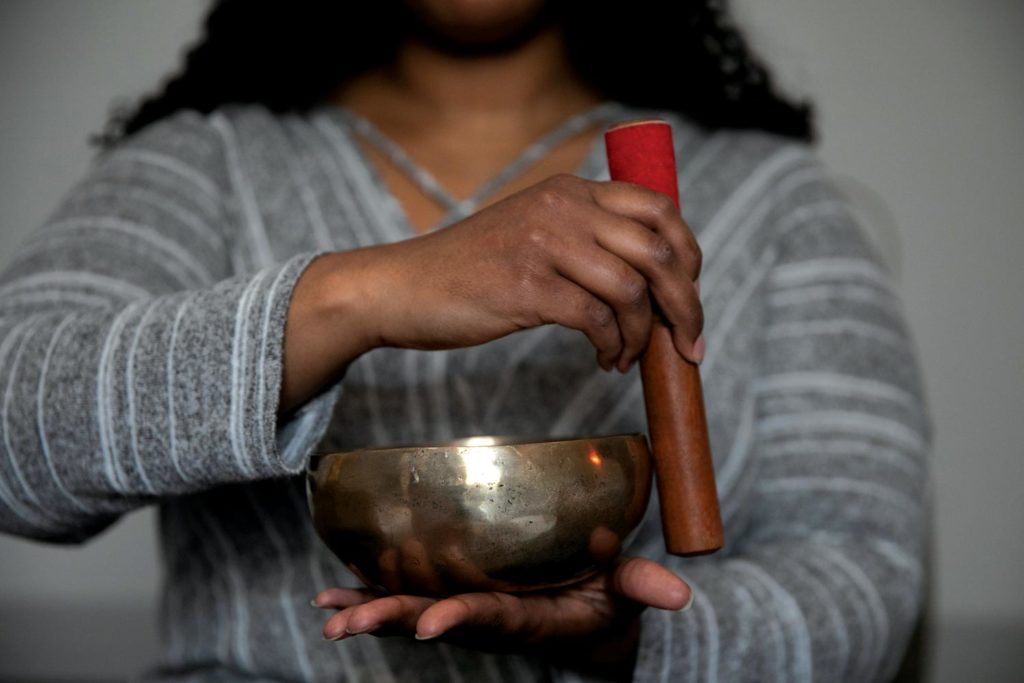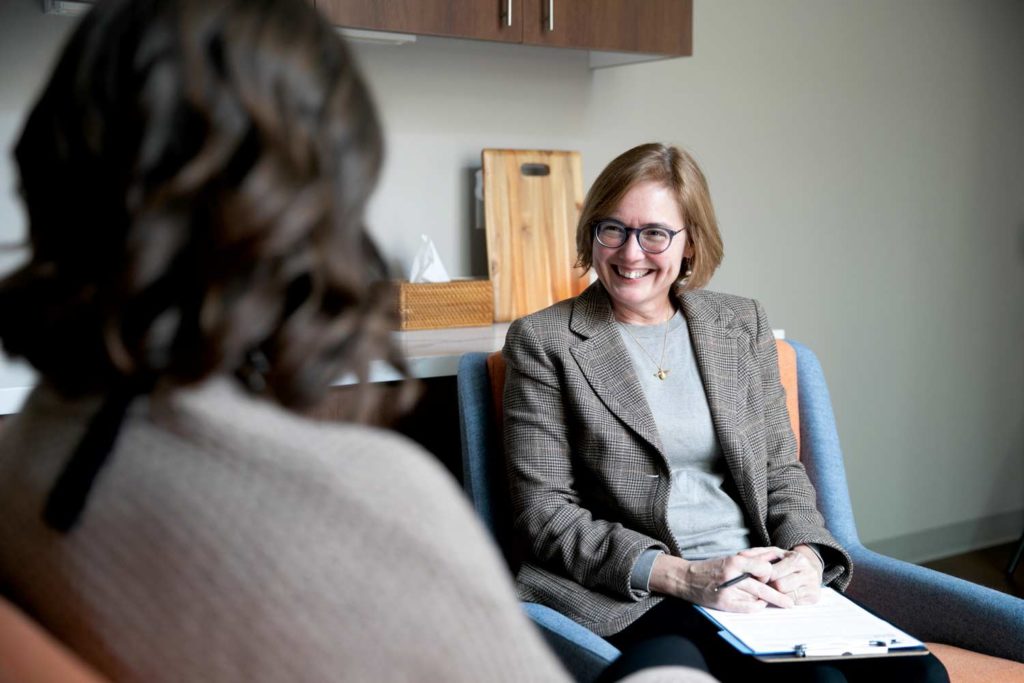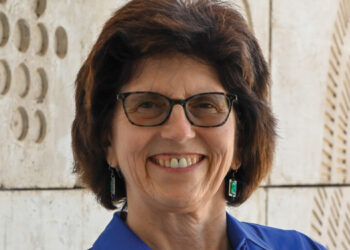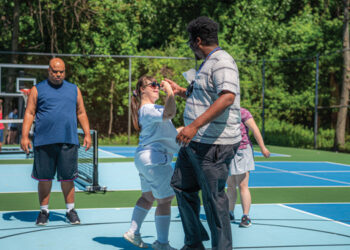Spirit, mind and body.
These three words make up the motto commonly used by YMCAs across the country. It encapsulates the purpose of every program that’s planned and service offered. Each new offering should benefit an individual’s spirit, mind and body, and is thus filtered through that lens.
However, the traditional YMCA model has been focused largely on using exercise classes, new fitness equipment and outdoor sports to keep members of all ages and fitness levels in good shape. As a result, this model has unintentionally been weighted toward benefitting the body.
In recent years, as a greater understanding of the symbiotic nature of physical, mental and emotional wellness continues to evolve in the industry, the balance has started to shift. Greater care is being put into holistic wellness practices across the industry, and the YMCA of the Greater Twin Cities, with locations throughout Minneapolis and St. Paul, Minnesota, is leading the charge.
“Historically, most people have known the Y as a destination for working out or doing fitness, and that is one discipline for taking care of the whole human experience — but it’s just one,” said Sally St. John, the senior director of well-being and integrative care at the Twin Cities Y.
Focusing on this trio — spirit, mind and body — has brought significant changes to the Twin Cities Y. “Our historic platform of spirit, mind and body has expanded as we’ve thought more holistically about well-being,” explained Glen Gunderson, the association’s president and CEO. “Today, we’re leading the way with digitally connected well-being, nature-based initiatives, whole life well-being, and a modern approach to youth development and community engagement.”
Since making the shift toward a holistic well-being focus, the Twin Cities Y has seen several new developments, all focused on delivering inclusive and accessible services to the community that strengthen the spirit, mind and body.
“We’re opening up our vision around fitness, aquatics and community programs,” said Greg Waibel, the chief operating officer (COO) at the Twin Cities Y. “It’s this larger vision of making sure we have whole life well-being services and programs for all.”
The most significant among the association’s recent developments is the George Wellbeing Center, a state-of-the-art testing and development facility that employs lifestyle care healing practices.
“We’re conveners, and we’re a place where we forge connections to healthy practices,” said Gunderson. “We create elements of access and eliminate barriers to drive a newer, fresh place of well-being.”
Bold Innovators
According to Gunderson, the bane of his organization’s existence has been the “swim and gym perception of the brand.” With how much communities are valuing holistic health, they want to be known as a place that can provide more than just treadmills and weights. Roughly seven years ago, the Twin Cities Y began making serious strides in this area.
“We were looking at how whole life well-being comes about,” said Waibel. “We started thinking much more broadly about the whole person. I would describe the whole person as also having emotions, relationships, finances and values, but many times, we’re focusing on just one element of wellness — fitness level or nutritional intake, etc. — without truly considering the whole person.”
The leadership team began challenging itself in the way it was viewing holistic well-being. “‘Spirit, mind and body’ has always been our mission, but recently we have got very clear and honest with ourselves about how the community has known the Y as a swim and gym, which translates to being really good at the body dimension of that spirit, mind and body dynamic,” explained St. John.
The result of this shift in focus was the George Wellbeing Center, the Twin Cities Y’s solution to providing services that strengthen the spirit and mind. Located in the same building as the Dayton at Gaviidae YMCA – Downtown Minneapolis, the George Wellbeing Center is the perfect complement to the traditional programs found at most of its other facilities.
Members will find a wide array of well-being and healing-centered services inside its walls, including acupuncture, health coaching, massage and bodywork, movement classes, meditation and mindfulness sessions, nutrition consultations, and much more, with plans to virtualize and digitize these experiences.
Every service is aimed at introducing members to sustainable healing and well-being practices. “The George Wellbeing Center has become this forward-thinking research and development facility that helps inform how we can improve accessibility to whole-body well-being, as well as accessibility to the community,” said Waibel.
This cutting-edge facility wouldn’t have been possible without the support of Bill and Penny George — after whom the facility is named. They are local philanthropists in Minneapolis who have been interested for a long time in improving community wellness.
“They had spent the better part of three decades in mindfulness, resilience and an ‘east meets west’ healing philosophy, looking at how we can think outside the healthcare system and start thinking about whole person well-being,” said Gunderson.
Beyond simply supporting the George Wellbeing Center financially, the Georges became “sage advisors,” according to Gunderson. And thanks to their investment in the Twin Cities Y, the association now has a valuable resource with which it can invest in the community’s whole well-being.
Integrative Care
If the George Wellbeing Center is the oven, the integrative care model is the recipe book. With a wide array of whole life well-being services to deliver, the George Wellbeing Center’s effectiveness is elevated. This is where the integrative care model comes into play.
Pairing the healing practices mentioned above with fitness programs, members are guided on a path to a holistic lifestyle by a combination of fitness instructors and healing practitioners. And based on their individual needs, each person’s well-being journey will look completely different.
“The integrative care model really allows the individual to navigate the healing experience that’s relevant to them,” explained Waibel. “It’s really centered on the individual — they are the guide of what’s appropriate and needed for them.”
Another core principle of the integrative care model is demonstrating one healing practice isn’t inherently better than the other. Because each individual has different well-being needs, each well-being practice has its own merit and will have varying effectiveness depending on the situation.
Educating members on the benefits of every healing practice helps them have a more fulfilling experience, according to St. John. “One of the pillars of integrative care is trying to get to a place where we’re positioning all the healing disciplines on the same level,” she said. “One discipline isn’t more dominant than the other.”
Equity doesn’t just apply to the healing disciplines, either. A major initiative of the George Wellbeing Center is lowering the barrier of entry to whole-body well-being services.
“We’ve been particularly excited about the degree to which we’re able to serve folks who otherwise would never have access to these healing practices, either because they’re not accessible geographically or they’re too expensive,” said Gunderson.
While an equitable focus on the spirit, mind and body is the cornerstone of the Twin Cities Y’s innovation, it’s not the only important trio for the organization. Gunderson, St. John and Waibel have each been critical to the association’s success and are the driving force behind making the Twin Cities Y a bold innovator.
Servant Leaders
Glen Gunderson, Greg Waibel and Sally St. John followed different paths to the organization, but their careers all had one thing in common: a passion for helping people achieve healthier lifestyles.
“I found this space almost by accident,” shared Gunderson. “I came out of my undergraduate degree thinking I was going to take a year off and go into sports medicine. At that time, I took a part-time job with a health club, and in that one year off, I found what I was most passionate about: helping people be healthy.”
Over the following 15 years, Gunderson spent time at LifeTime Fitness working in marketing, as well as a brand and business development capacity, before working for a short time at a health technology company.
When that company was about to be sold, he began searching for other options related to health and wellness; he soon was contacted for a job at the Twin Cities Y. And while working in the nonprofit world seemed like a strange fit at first, Gunderson recalled it became clearer that the job aligned with his mission for “moving the community to a healthier place.”
Like Gunderson, Waibel began his career in the for-profit world, working in finance and operations for progressive for-profit ventures. After achieving success in these ventures for a few years, however, he realized he wasn’t fulfilled and was looking for more meaning. “I was searching for a career opportunity where values meet up with my professional capabilities,” said Waibel. “The Y was looking for somebody who had strong business acumen and was a values match. So, I joined the organization as the chief financial officer (CFO).”
After serving as the CFO and chief technology officer (CTO) for several years, he returned four years ago to being the association’s COO in order to play a bigger role in the organization’s innovation, vision and mission delivery.
St. John’s passion — and career path — has always been wellness-driven. She began her career at a private wellness center in Chicago. There, she was introduced to the juxtaposition of conventional healthcare practices, and complementary and alternative healing practices focused on whole life well-being.
Over time, St. John found the conventional healthcare model wasn’t focused enough on holistic well-being. “I started to feel like my needs and my clients’ needs were not being fully met as a whole person,” she shared. “So, I started to engage with alternative care services, and I was motivated to help bridge the gap between conventional healthcare, and complementary and alternative holistic healthcare.”
Today, these three work in conjunction as thought leaders for the Twin Cities Y, each bringing their own experiences to the table. This leadership dynamic has been critical to the organization’s success.
Gunderson — an adept leader himself — has nothing but praise for his cohorts. “These two have been exceptional,” he said. “They’ve been paramount in their passion, purpose and delivering exceptional leadership.”
Each background and path led this trio of leaders to where they are today. As the well-being movement marches onward, these three are critical to driving the Twin Cities Y to be a bold innovator.
Pathways to Wellness
The George Wellbeing Center is a huge step in the right direction for the whole-body well-being movement, but there will be new developments on the horizon. As the Twin Cities Y gets more data on how members want these wellness and healing experiences to take shape, they’ll be able to chart out the best pathways to wellness.
“As we’ve been introducing these services to the community, a lot of members are starting to see they have a different entry point of how they can start working on their health,” explained St. John. “Our hope is this site inspires and gives people an understanding of what this concept looks like, that when an individual is engaging with the Y, there are many pathways to address their healing.”
Led by an exceptional trio of leaders and a passion for making the spirit, mind and body healthy, the Twin Cities Y will continue to forge the path of whole-body well-being innovation.
“We’re helping the community move to a better place on an individual health level, and a collective community engagement and community health level,” said Gunderson. “When every individual is given the right to self-care, people start believing their lives matter, their choices matter, and their journey has autonomy and meaning.”














